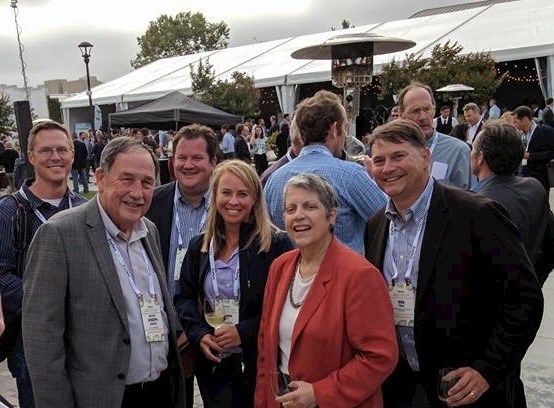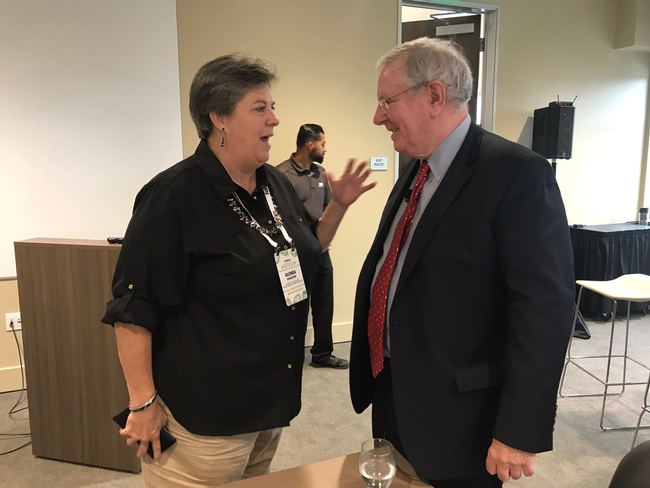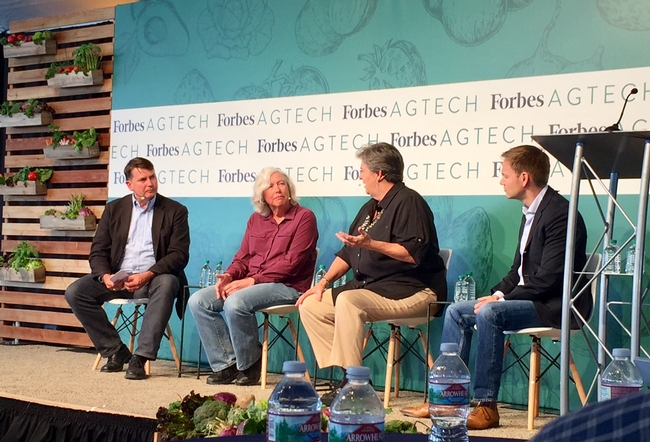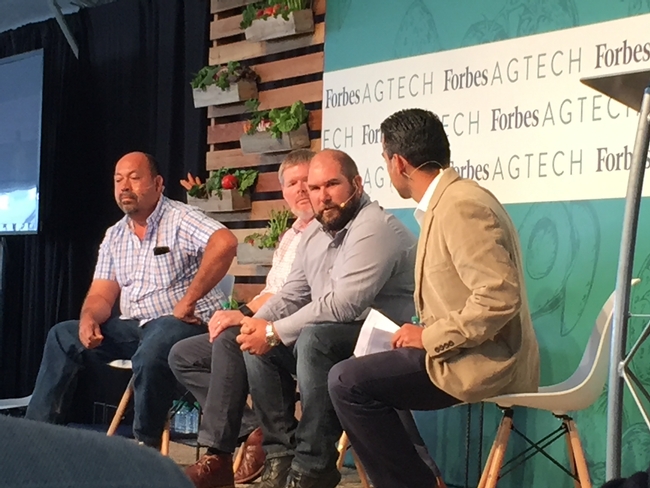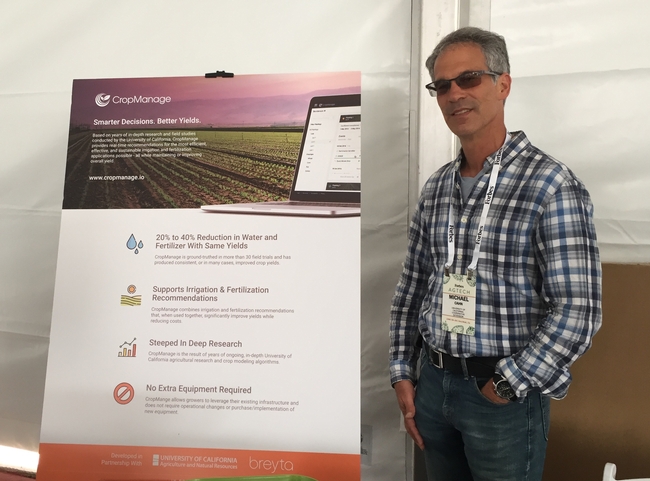Tech meets ag at Forbes AgTech Summit in Salinas
“As we confront the problems in California today, we must ask ourselves, how will ag and tech solve these problems together? How can Salinas Valley and Silicon Valley work more harmoniously and how will the University of California's quest for new knowledge play a role?” said UC President Janet Napolitano to farmers, engineers, entrepreneurs and others attending the Third Annual Forbes AgTech Summit.
Silicon Valley, the birth place of high tech, converged with Salinas Valley, “the nation's salad bowl,” on June 28 and 29 in Salinas to explore opportunities to apply technology to agriculture's challenges. About 700 people participated in the invitation-only event, which was co-sponsored by the University of California and UC ANR.
“The Forbes AgTech Summit brings together individuals and institutions from two integral parts of California's economic engine — agriculture and technology,” Napolitano said. ”The two have historically remained on parallel paths, each fueling the state's growth, but rarely converging. Yet, this is a unique moment here in California, and we have a unique opportunity in this nexus of agricultural bounty and technological innovation.”
Steve Forbes, chairman and editor-in-chief of Forbes Media, told Farm to Table Talk podcast, “Knowledge comes from experimentation, constant discovery, which agriculture has been doing for well over 1,000 years. That pace in agriculture is increasing today. There's no reason why, if we don't do silly things, the world, even though population will grow by 2 billion in the next three decades, the world won't have sufficient food, more abundant and healthier food than we can even imagine today. Human ingenuity will do it.”
VP Glenda Humiston joined Sallie Calhoun, owner and manager of Paicines Ranch, and Trent McKnight, rancher and founder of Agricorps, to discuss challenges and opportunities to grow entrepreneurs in agriculture with moderator Rob Trice, co-founder and partner of The Mixing Bowl. McKnight said there is technology gap between rural and urban America. Humiston noted that poor access to high-speed broadband in rural regions could slow their adoption of technology.
In a four-minute video produced by Forbes, Humiston discusses challenges and opportunities for agriculture. She describes how The VINE, or The Verde Innovation Network for Entrepreneurship, is being launched by UCANR and led by Gabriel Youtsey, chief innovation officer, to cultivate regional innovation and entrepreneurship ecosystems in rural communities.
Between the rising cost of minimum wage, an aging working population and immigration crackdowns, farming is facing a worker shortage. Brian Antle of Tanimura & Antle, Dan Steere, co-founder and CEO of Abundant Robotics, and Javier Zamora, owner of JSM Organics, discussed with moderator David Mancera of Kitchen Table Advisors, how technology could perform work that people don't want to do. Antle pointed out that while machines can plant and cut, they cannot replace the judgment of skilled workers.
In her address, Napolitano explained UC's interest in agricultural technology.
“We started the UC Global Food Initiative three years ago to find scalable solutions to sustainably and nutritiously feed a growing world population — one that's expected to reach 8 billion people by 2025,” Napolitano said. “At the same time, for more than a hundred years, people at UC Agriculture and Natural Resources have equipped farmers across the state with the latest scientific and technological advances in agriculture.
“They connect cutting-edge innovation with the state's farmers, who produce half of the nation's fruit and vegetables and export food to countries around the world. And they are constantly generating and testing new ideas.”
See related news coverage:
Napolitano Says Ag Needs Technology
Greater collaboration between ag and tech coming
University of California kicks off Ag innovation program
Labor shortage in ag fueling technology

